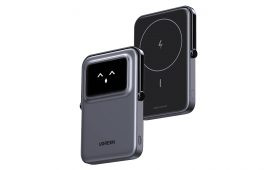Key Takeaways
- Unreliable smart lights can be frustrating
- Recent changes may impact Hue-Google Home connectivity
- Resetting the Hue lights’ Matter connection could fix disconnect issues.
Smart home technology often sucks.
I used to be all-in on internet-connected gadgets like smart appliances, sensors, and locks, but because of the constant issues I’ve encountered over the years — mainly random disconnects and faulty software updates — I’ve reduced my setup to a few Philips Hue smart bulbs paired with several of Google Nest Audio and Nest Hub devices (of course, I still have an army of iRobot robot vacuums). They may be expensive, but at one point, Hue’s bulbs were the best out there thanks to Hue’s reliable Zigbee mesh network and dedicated hub that communicated directly with Google’s various smart speakers.
Unfortunately, that changed recently — though it’s unclear if this is the fault of the Hue or Google’s Home platform. Here’s the process I went through to get my lights working again (for the actual solution, scroll down to the bottom of this story).
0:51

Related
Govee’s Lamp 2 is a welcome addition to my smart home
Govee’s Smart Lamp 2 puts the fun in my functional smart home.
Unreliable smart lights can be incredibly frustrating
Welcome to my smart home nightmare
A few months ago, my Hue lights stopped consistently working in the Google Home app, which I use to control most of my smartphone devices. Why? I have no clue, but I figured it was just a glitch. As the weeks passed, the rampant “failure to connect” issues became more common, with certain lights dropping out altogether. Sometimes voice commands would work, but in other situations, my Hue lights would be entirely unresponsive or not turn on/off at all. Usually, a restart of the Philips Hue Hub and my router solved the problem, but a few days ago, every Hue light became disconnected in the Home app, regardless of how many times I reset everything.
I’m not sure what changed, but part of me thinks Google’s focus has shifted entirely to Gemini, resulting in the tech giant leaving its once excellent smart home ecosystem in a less-than-stellar state. To be clear, I don’t know if this is actually what happened, but the issues started roughly when Gemini and Gemini Live launched a few months ago. My best guess is that the Thread-to-Google Home connection I migrated my lights to a few years ago encountered some sort of issue, possibly on Google’s end, especially since the Hue lights still work perfectly through the Hue iOS and Android app.
Thread and Matter are widely regarded as industry standard replacements for Zigbee, a low-power wireless mesh network a lot of smart home devices used to run on, including Philips Hue lights. Both Matter and Thread are supported by most modern smart home devices, either through software updates or hardware revisions.
Matter makes devices across smart home systems work together, while Thread improves the connection between them. Both Matter and Thread are supported by major players in the smart home world, including Google, Amazon, and Apple. However, the rollout of Matter hasn’t been perfect, with smart home users reporting connection issues with devices from various brands.

Related
The M4 MacBook Pro with nano-texture includes an unexpected bonus accessory
Wipe away that grease with Apple’s pricey Polishing Cloth.
I tried various methods to fix the issue, but only one thing worked
It’s time to reset your Hue Lights’ Matter connection
After delving into the depths of Reddit for a solution, I started my journey with a few more straightforward potential fixes. First, I removed Hue’s connection to the Home app by navigating to Settings, selecting Works With Google, and tapping Unlink. I assumed this would remove every Hue light from the Home app, allowing me to re-add them when re-link my Hue account. Unfortunately, that wasn’t the case. Instead, I ended up with doubles of my smart lights in every room — great. Making matters worse, none of the lights were responsive, and for each smart light copy, the Remove Device option was grayed out entirely.
Since making this change a few days ago, I’ve encountered only one brief connection error.
Okay, so now what? At that point, I was pretty frustrated and downright confused. Did I need to ditch my Hue hub entirely? Do I even need the Hub now that I’m relying on Matter? I’ve always kept it around because I sometimes use Amazon Echo and HomePod devices to control my smart home — I also assume it makes the system a bit more reliable.
Then I dug up this Reddit thread (thanks Affectionate-Turn858) and uncovered a very simple solution I never would have found on my own. First, Unlinked my Hue account from the Home app with the steps above, and then I went through the following steps:
- In the Hue app, go to Settings, scroll down to Integration, tap Smart Home, and select Other app.
- Select Get Pairing Code, and select Next. You then get an 11-digit code. Save this code for the next step.
- Open the Google Home app and select the + button.
- Select New Device, pick your home setup, and tap Next.
- Tap Matter-enabled Device, then Setup Without QR Code, and paste the 11-digit code here.
After following these steps, all my lights appeared in the Google Home app, and the duplicates disappeared. I then spent a few minutes assigning my various Hue bulbs to the correct rooms and creating groups. Since making this change a few days ago, I’ve encountered only one brief connection error. This is a significant improvement over the problems I experienced before. As far as I can tell, the above steps re-add your Hue lights to Google’s Home app via Matter, which seems to have solved all of my issues — at least for now.
Did this fix work for you? Let me know in the comments below. Based on the posts in this Reddit thread, it doesn’t seem to be a solution for everyone, unfortunately.

Related
Pizza Hut just created a PS5 accessory no one needs
Pizza Hut has created the PIZZAWRMR to keep your pizza warm during intense gaming sessions.













